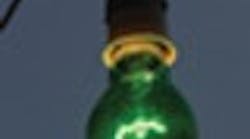The vision was simple and elegant: By shining a beam of light at a process unit or across an entire facility, a near-instantaneous measurement of gas emissions could be obtained that was accurate to parts-per-million. The instrument could replace dozens of sensors, and didn’;t incur the cost or difficulties associated with collecting a sample, taking it to a laboratory and performing a complex analysis.
In the early 1990s, that was the vision for what is now called optical remote sensing (ORS). This technology has become simpler, more reliable and more accurate, but its popularity for monitoring emissions has not grown. A new look at this technology, however, is worthwhile.
Guiding light
The science of ORS — as opposed to the technical applications — is well established and understood. A light beam is shined across a distance, which could be as short as from one side of an exhaust stack to another. Molecular species in the intervening space absorb light, producing a spectrograph. The original technology was based mostly on nondispersive infrared (NDIR), which simply shines IR light through a space.
One of the more popular versions nowadays is Fourier Transform Infrared (FTIR), which employs infrared light in a specific wavelength range, and mathematically manipulates the signal to first separate the molecular species that are present, and then to block out noncritical species, such as water or nitrogen.
There are various ways to set up ORS equipment. The simplest requires a transmitter on one side of the space and a receiver on the other: the “bistatic” configuration. Across long distances (up to a few hundred meters), telescopes can be used both to send and receive the signal, providing better light-gathering power. An alternative is to place a mirror on the far side, which sends the signal back to its origin, where a combined transmitter/receiver (transceiver) is located: the “monostatic” configuration. Passing the light beam twice through the area of interest improves signal resolution.
Other variations that have been developed over the years include “extractive” analysis, in which a sample is drawn from a stream and conveyed to a temperature-controlled cell. Within the cell, a light beam can be passed back and forth through the sample multiple times to obtain a reading, which improves the accuracy of the measurement.
Extractive methods, however, approach the conventional use of FTIR instruments in laboratories, and limit two of the key advantage of ORS — the ability to sense chemicals at a distance and to provide area, as opposed to point, measurements. ORS proponents talk about “fenceline” measurement — sensing whatever chemical species cross the fenceline of a plant or site.
“We’;ve used ORS technology in the past, but we decided to go away from it and instead invest in better leak-prevention equipment,” says J.D. Tate, project leader at Dow Chemical Co.’;s Freeport, Texas, facility. He goes on to say that Dow has used the technology in experimental work, and is considering its use for measuring lower-explosive-limit (LEL) concentrations in work areas and along pipelines.
ORS proponents concede that the technology has had problems being accepted. “Cost, premature commercialization, complexity of operation and data interpretation, interferences and false positives, and misuse [right instrument for the wrong application] are only several reasons for this reduced interest in ORS technologies,” Ram Hashmonay, a team leader at Arcadis, Research Triangle Park, N.C., told attendees at the NPRA Environmental and Safety Conference this fall (San Antonio, Sept. 26-28). But he notes that new technologies promise to turn this view around.
“I guess I fall in the middle of views for or against this technology,” says a senior chemist at a major oil company in Texas. “I believe that it has more applications than is currently practiced, and more companies seem to be getting interested in it.” This chemist says his company used ORS to monitor a unit emitting VOCs and to monitor combustible vapor composition in the head space of a storage vessel.
Nick Basta is editor at large for Chemical Processing magazine. E-mail him at [email protected].
